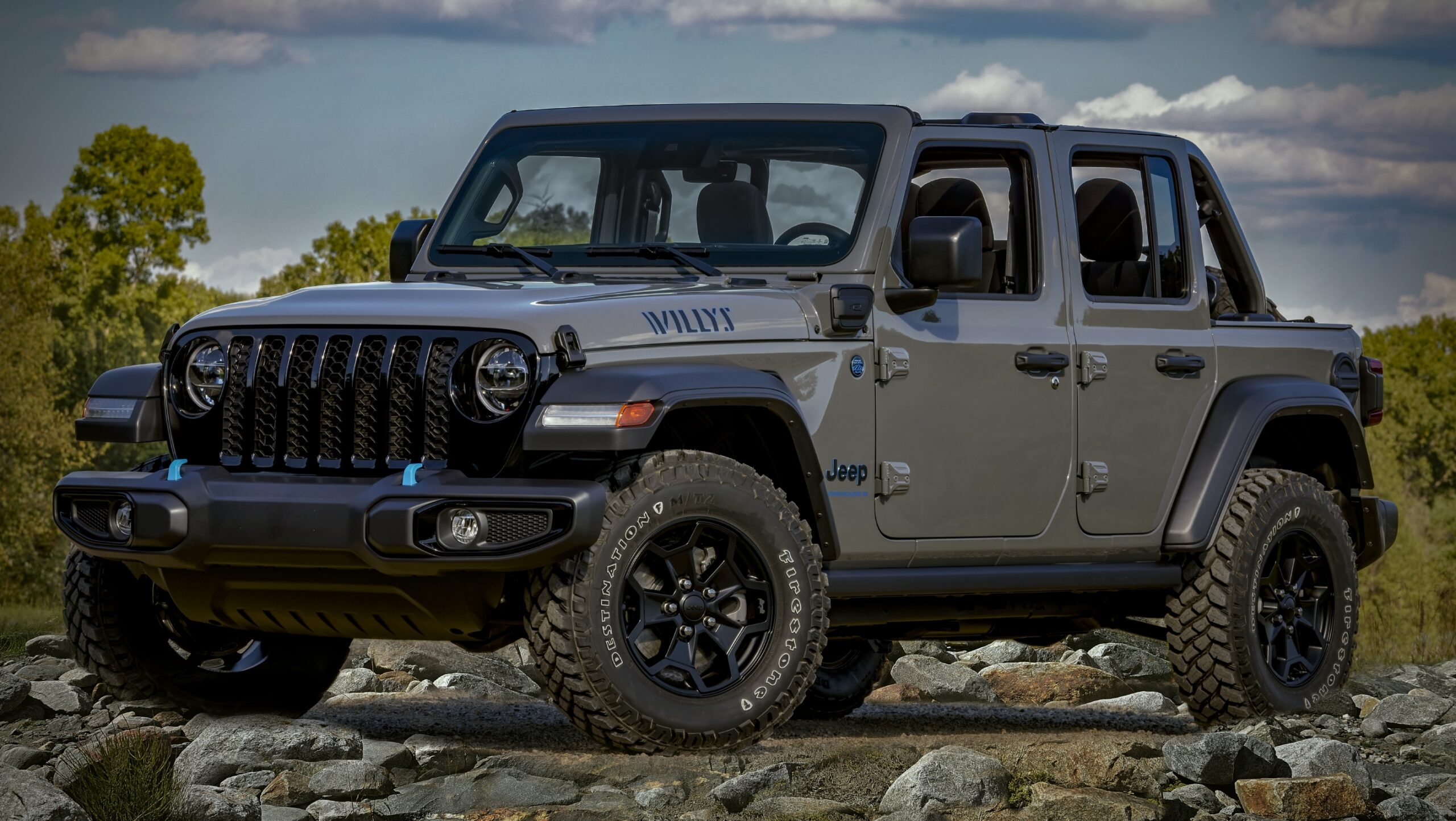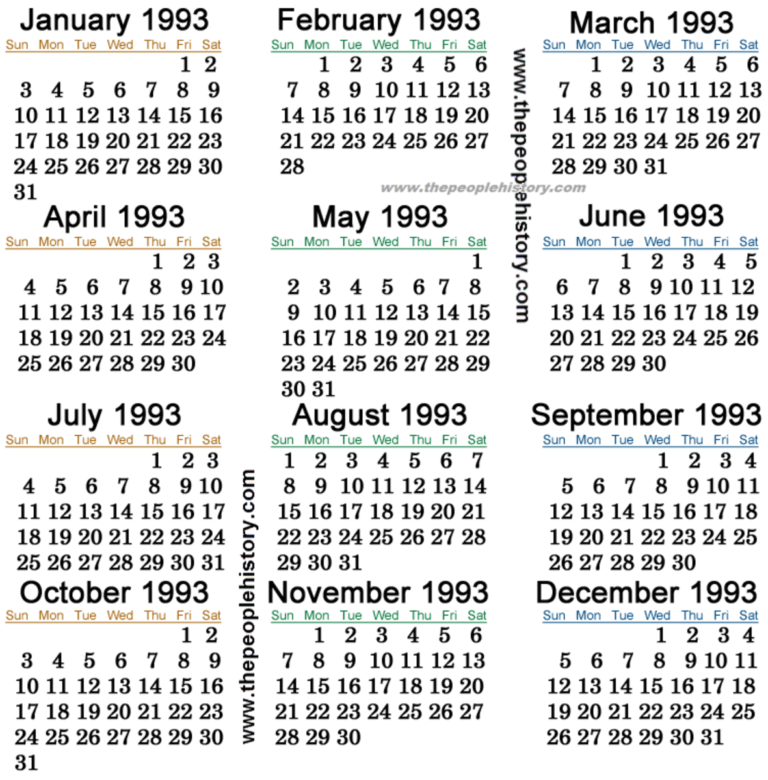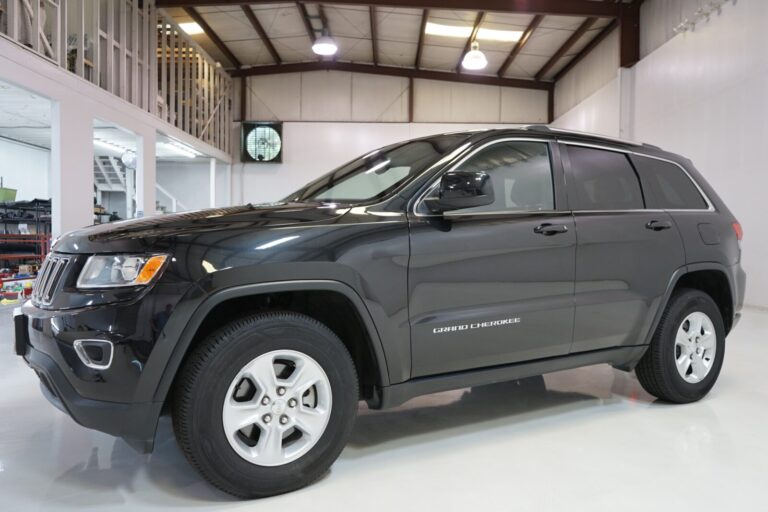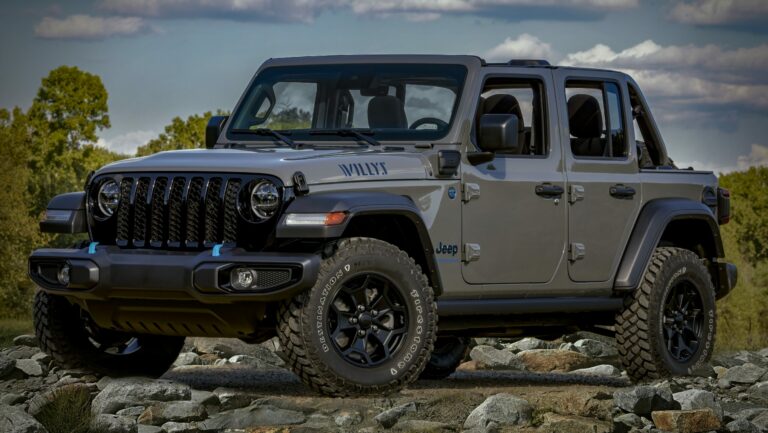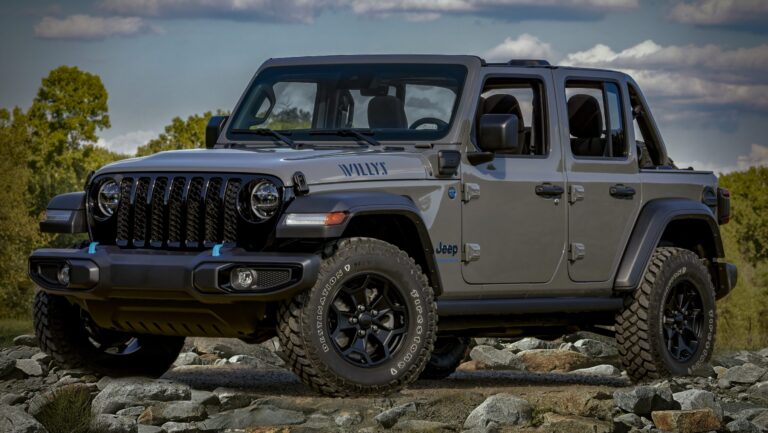Jeep 2.5l Used Engines For Sale: A Comprehensive Guide to Revitalizing Your Ride
Jeep 2.5l Used Engines For Sale: A Comprehensive Guide to Revitalizing Your Ride jeeps.truckstrend.com
For generations of Jeep enthusiasts, the rumble of a reliable engine is more than just a sound; it’s the heartbeat of adventure. Among the most iconic and enduring powerplants in Jeep history is the humble yet robust 2.5-liter, 4-cylinder engine, also known as the AMC 150. Found in a wide array of beloved models like the Wrangler YJ and TJ, Cherokee XJ, and Comanche MJ, this engine earned a reputation for its simplicity, durability, and surprising capability.
However, even the most resilient engines eventually reach the end of their lifespan, or perhaps a sudden mechanical failure leaves a cherished Jeep stranded. This is where the market for Jeep 2.5l used engines for sale becomes a beacon of hope for countless owners. Opting for a used engine offers a cost-effective and practical solution to breathe new life into a classic off-roader or daily driver. This comprehensive guide will navigate the intricacies of finding, evaluating, purchasing, and installing a used Jeep 2.5L engine, ensuring you make an informed decision and get your Jeep back on the trail or road with confidence.
Jeep 2.5l Used Engines For Sale: A Comprehensive Guide to Revitalizing Your Ride
Understanding the Jeep 2.5L Engine: A Legacy of Reliability
Before diving into the buying process, it’s essential to understand what makes the Jeep 2.5L engine so significant and why it remains a popular choice for replacements and swaps. The AMC 150, as it was internally known, was a stalwart of Jeep’s lineup from the late 1980s through the early 2000s.
Key Characteristics and Evolution:
- Displacement: 2.5 liters (150 cubic inches)
- Cylinders: Inline-4
- Design: Cast iron block and head, known for its robust construction.
- Fuel Delivery:

- Throttle Body Injection (TBI): Early versions (roughly 1987-1990) utilized TBI, offering simpler electronics but less precise fuel delivery.
- Multi-Port Injection (MPI): Later versions (1991-2001) transitioned to MPI, improving fuel efficiency, power output, and overall drivability. This is generally the more sought-after version due to its superior performance and modern electronics.
- Horsepower/Torque: Varied slightly by year and fuel injection type, typically ranging from 117-125 horsepower and 135-140 lb-ft of torque. While not a powerhouse, its torque curve was well-suited for the lighter Jeeps it powered, especially for off-road crawling.
- Vehicles Powered:
- Jeep Wrangler YJ (1987-1995)
- Jeep Wrangler TJ (1997-2002)
- Jeep Cherokee XJ (1987-2001)
- Jeep Comanche MJ (1987-1992)

The 2.5L engine’s enduring appeal lies in its straightforward design, ease of maintenance, and surprising longevity when properly cared for. It’s not uncommon to find these engines with well over 200,000 miles still running strong, making them prime candidates for a second life in another vehicle.
Why Choose a Used Jeep 2.5L Engine? Benefits and Considerations
The decision to purchase a used engine is often driven by a blend of practical benefits and necessary considerations.
Primary Benefits:
- Cost Savings: This is typically the biggest motivator. A used engine is significantly more affordable than a new crate engine or even a professionally remanufactured unit. This can make the difference between repairing a vehicle and having to scrap it.
- Availability: Due to the sheer number of Jeeps produced with this engine, the market for used 2.5L powerplants is relatively robust. You’re likely to find options across various price points and conditions.
- Originality & Compatibility: For classic Jeep owners, using a period-correct used engine helps maintain the vehicle’s originality. Furthermore, it ensures perfect fitment and compatibility with existing drivetrain components, wiring harnesses, and engine mounts, avoiding the complexities of an engine swap to a different model.
- Reliability (with caveats): The 2.5L, as mentioned, is inherently reliable. A good used engine, even with moderate mileage, can provide many more years of service, especially if it was well-maintained in its previous life.
- DIY Friendly: The simplicity of the 2.5L makes it a popular choice for home mechanics. Swapping a like-for-like engine is a manageable project for those with moderate mechanical skills and the right tools.
Important Considerations and Potential Drawbacks:
- Unknown History: The biggest risk with any used engine is its past. You often don’t know how well it was maintained, if it suffered from overheating, or if it was subjected to harsh driving conditions.
- Varying Condition: Used engines can range from low-mileage gems to high-mileage units on their last legs. The price will often reflect this, but careful inspection is paramount.
- Hidden Issues: External appearance can be deceiving. Internal wear, subtle cracks, or bearing issues may not be immediately apparent.
- Lack of Warranty (or Limited): While some reputable sellers offer a short warranty (e.g., 30-90 days), it’s rarely as comprehensive as warranties on new or remanufactured engines.
Navigating the Market: Where to Find Used Jeep 2.5L Engines
Finding the right used engine requires knowing where to look and how to approach different sellers.
- Online Marketplaces:
- eBay: A vast selection, often with detailed descriptions, photos, and seller ratings. Be sure to check shipping costs, as engines are heavy.
- Facebook Marketplace/Groups: Local listings are common, allowing for in-person inspection and pickup. Look for dedicated Jeep enthusiast groups as well.
- Dedicated Automotive Parts Sites: Websites specializing in used auto parts (e.g., LKQ, Car-Part.com) often have searchable inventories from salvage yards across the country.
- Salvage Yards/Auto Recyclers:
- Local Yards: Visiting a local salvage yard allows for hands-on inspection. They often pull the engine for you.
- Nationwide Networks: Many yards are part of larger networks, enabling them to locate engines for you even if they don’t have one in stock locally. These typically offer more structured warranties.
- Specialized Jeep Parts Dealers: Some businesses focus exclusively on used or remanufactured Jeep components. These often have higher prices but may offer better-vetted engines and more comprehensive warranties.
- Jeep Forums & Enthusiast Communities: Websites like Jeepforum.com, NAXJA (North American XJ Association), and Pirate4x4 can have "for sale" sections where members sell parts. These often come with valuable peer recommendations.
- Local Mechanics/Word-of-Mouth: Sometimes, your trusted mechanic might know of a reliable source or even have a good core engine from a previous job.
Tips for Searching:
- Be Specific: Know your Jeep’s year, model, and whether it originally had TBI or MPI. While swaps are possible, finding a direct replacement simplifies things.
- Ask for Details: Inquire about the donor vehicle’s year, VIN, mileage, and reason for being junked.
- Request Photos/Videos: Ask for multiple angles, especially of critical areas like the oil pan, cylinder head, and bell housing. A video of the engine running before removal (if available) is golden.
Crucial Steps Before You Buy: Inspection and Verification
This is arguably the most critical stage. A thorough inspection can save you significant time, money, and headaches down the road.
-
Visual Inspection (External):
- Leaks: Look for signs of oil, coolant, or power steering fluid leaks around seals, gaskets, and hoses. While some minor leaks can be addressed with new gaskets, excessive leaking indicates neglect.
- Cracks: Inspect the engine block and cylinder head for any visible cracks, especially around mounting points, exhaust manifolds, and the freeze plugs. Cracks are often deal-breakers.
- Overheating Signs: Check for discolored paint, burnt wiring, or warped components, which can indicate severe overheating in the past.
- Corrosion: Excessive rust, especially on critical fasteners or electrical connectors, can indicate prolonged exposure to elements or a saltwater environment.
- Overall Cleanliness: While a perfectly clean engine might hide issues, one caked in grime suggests neglect.
- Accessories: Note what accessories are included (alternator, power steering pump, AC compressor, intake/exhaust manifolds). While you’ll likely swap your own, knowing what’s there can help assess value.
-
Internal Checks (If Possible):
- Oil Pan: If the oil pan can be easily removed (unlikely on a pulled engine), look for metal shavings, which indicate severe internal wear.
- Spark Plugs: If accessible, remove a few spark plugs. Their condition can offer clues about combustion health (oil burning, rich/lean conditions).
- Crankshaft Rotation: Try to manually turn the crankshaft (via the harmonic balancer bolt) to ensure it rotates smoothly without binding.
- Compression Test: This is the gold standard if the engine is still in the donor vehicle and runnable. A compression test reveals the health of the piston rings, valves, and head gasket. Consistent readings across all cylinders are ideal. Even if the seller won’t do it, asking about it can gauge their transparency.
-
Documentation and Seller Reputation:
- Donor Vehicle VIN: Ask for the VIN of the vehicle the engine came from. This allows you to verify the year and model, and potentially check for accident history (though mileage is usually not tied to the engine’s VIN).
- Mileage: Get a mileage estimate, but understand it’s often an estimate from the donor vehicle’s odometer.
- Warranty: Discuss any warranty offered. A 30-90 day warranty on parts is common from reputable salvage yards, giving you time to install and test. Understand what the warranty covers (parts only, labor, specific failures).
- Seller Reviews: If buying online, check seller reviews and ratings. For local salvage yards, check online reviews or ask for recommendations.
Installation and Post-Installation Tips for Your Used 2.5L Engine
Once you’ve secured your used 2.5L engine, proper preparation and installation are key to its longevity.
Pre-Installation Preparation (Highly Recommended):
Even a "good" used engine benefits from preventative maintenance before installation.
- Replace All External Seals: Rear main seal, front main seal, oil pan gasket, valve cover gasket. These are cheap and easy to do with the engine out.
- New Water Pump and Thermostat: Inexpensive and critical for cooling system health.
- New Spark Plugs and Wires: Ensures optimal ignition.
- Inspect/Replace Sensors: Critical sensors like the Crankshaft Position Sensor (CPS), Oxygen (O2) sensors, MAP sensor, and coolant temperature sensor are prone to failure and can cause drivability issues. Consider replacing them, especially the CPS which is difficult to access when the engine is installed.
- Clean Fuel System: Inspect/clean fuel injectors (MPI) or throttle body (TBI).
- New Fluids: Plan for fresh engine oil, coolant, and power steering fluid.
- Inspect Belts and Hoses: Replace any that show signs of wear.
- Motor Mounts: Consider replacing worn motor mounts for smoother operation.
During Installation:
- Torque Specs: Use a torque wrench for all critical fasteners (flywheel bolts, bell housing bolts, motor mount bolts, intake/exhaust manifold bolts).
- Check All Connections: Double-check all electrical connectors, vacuum lines, and fluid hoses before starting.
- Prime the Oil System: Before the first start, consider priming the oil pump by disconnecting the ignition coil and cranking the engine for several seconds until oil pressure builds.
First Start-up and Break-in:
- Monitor Gauges: Keep a close eye on oil pressure and coolant temperature.
- Listen for Unusual Noises: Pay attention to knocks, rattles, or ticking.
- Check for Leaks: Visually inspect for any fluid leaks once the engine warms up.
- Gentle Break-in: For the first few hundred miles, avoid prolonged high RPMs, heavy towing, or aggressive driving. Vary engine speeds.
- Early Oil Change: Perform an oil and filter change after 500-1000 miles to remove any contaminants from the initial run.
Potential Challenges and Solutions
While buying a used engine can be rewarding, be aware of common challenges:
- Engine Mismatch (TBI vs. MPI):
- Challenge: Swapping a TBI engine into an MPI vehicle (or vice-versa) requires significant changes to the wiring harness, ECU, fuel system, and potentially sensors.
- Solution: Always verify the specific year and fuel injection type of the engine you’re buying to match your vehicle or be prepared for the conversion effort.
- Hidden Internal Damage:
- Challenge: The engine runs initially, but develops serious issues shortly after installation.
- Solution: Thorough pre-purchase inspection, buying from reputable sellers with a warranty, and following pre-installation maintenance.
- Shipping Damage:
- Challenge: Engines are heavy and can be damaged in transit.
- Solution: Inspect the engine immediately upon delivery. Note any damage on the shipping manifest before signing, and take photos.
- Core Charge:
- Challenge: Many sellers require a "core charge" which is refunded when you return your old engine.
- Solution: Understand the core charge policy upfront, including the condition required for the core return and the timeframe.
Jeep 2.5L Used Engines For Sale: Estimated Price Table
Prices for used engines fluctuate significantly based on condition, mileage, seller, location, and market demand. The table below provides general estimates.
| Condition/Type | Estimated Price Range (USD) | Typical Mileage (Miles) | Warranty (Days) | Notes |
|---|---|---|---|---|
| Standard Used (High Mileage) | $600 – $1,000 | 120,000 – 180,000 | 30 – 90 | Often from local salvage yards; basic accessories may or may not be included. "As-is" sales are common. Expect more pre-installation maintenance. |
| Standard Used (Medium Mileage) | $1,000 – $1,500 | 80,000 – 120,000 | 90 – 180 | Better chance of coming from a running vehicle. May include some accessories (intake, exhaust manifold). A common balance of cost and condition. |
| Low Mileage Used | $1,500 – $2,500+ | Under 80,000 | 180 – 365 | Harder to find; often from specialized auto recyclers or parts dealers. Commands a premium. Less pre-installation work usually needed, but still recommended. |
| Remanufactured | $2,000 – $3,500+ | 0 (fully rebuilt) | 1 – 3 years | Not technically "used," but a common alternative. Includes new wear parts, machined components, and comprehensive testing. Often comes with a core charge. |
| Core Charge | $200 – $500 (Refundable) | N/A | N/A | An additional deposit required by many sellers, refunded upon return of your old, rebuildable engine. |
Disclaimer: These prices are estimates only and can vary widely. Shipping costs, core charges, and included accessories will also affect the final price.
Frequently Asked Questions (FAQ)
Q1: What years did the 2.5L engine come in Jeeps?
A1: The Jeep 2.5L (AMC 150) engine was primarily used from 1987 to 2001 in models like the Wrangler YJ (1987-1995), Wrangler TJ (1997-2002), Cherokee XJ (1987-2001), and Comanche MJ (1987-1992).
Q2: Is the Jeep 2.5L engine reliable?
A2: Yes, the 2.5L is generally considered very reliable. Its simple, robust design and cast-iron construction contribute to its longevity, often reaching 200,000+ miles with proper maintenance.
Q3: What’s the difference between TBI and MPI 2.5L engines? Can I swap them?
A3: TBI (Throttle Body Injection) was used in earlier models (approx. 1987-1990) and is simpler. MPI (Multi-Port Injection) was used from 1991 onwards, offering better performance and fuel efficiency. Swapping between TBI and MPI versions is possible but complex, requiring changes to the ECU, wiring harness, fuel pump, and sometimes sensors. It’s generally recommended to stick to the same fuel injection type as your original engine.
Q4: How do I know the mileage of a used engine?
A4: Most sellers provide an estimated mileage based on the odometer reading of the donor vehicle. While not always exact for the engine itself, it’s the best indicator. Always ask for the donor vehicle’s VIN to verify the information.
Q5: What should I replace before installing a used engine?
A5: It’s highly recommended to replace all external seals (rear main, front main, oil pan, valve cover), the water pump, thermostat, spark plugs, and any questionable sensors (especially the Crankshaft Position Sensor). New fluids (oil, coolant) are also a must.
Q6: Are used engines worth it compared to remanufactured?
A6: Used engines are significantly cheaper, making them ideal for budget-conscious repairs or older vehicles where the cost of a remanufactured engine might exceed the vehicle’s value. Remanufactured engines offer peace of mind with new wear parts and comprehensive warranties, but at a higher price point. Your budget, mechanical skills, and risk tolerance should guide your decision.
Q7: Where can I get a used 2.5L engine shipped?
A7: Many online sellers, nationwide salvage yard networks (like LKQ), and specialized auto parts dealers offer freight shipping for engines. Be prepared for potentially high shipping costs due to the weight. Always ensure the seller properly crates or palletizes the engine to prevent damage during transit.
Conclusion
The Jeep 2.5L engine, a workhorse of its era, continues to be a vital component in keeping countless beloved Jeeps on the road and trail. For owners facing an engine replacement, the market for Jeep 2.5l used engines for sale presents a compelling and often cost-effective solution. By understanding the engine’s characteristics, diligently navigating the market, performing thorough inspections, and undertaking careful pre-installation maintenance, you can significantly increase your chances of acquiring a reliable powerplant.
While the allure of a lower price is strong, remember that due diligence is paramount. A well-chosen used 2.5L engine isn’t just a replacement part; it’s an investment in extending the life and adventures of your cherished Jeep, allowing you to continue exploring where the pavement ends. With the right approach, your Jeep will be back to its spirited self, ready for many more miles of open-air freedom and rugged capability.

